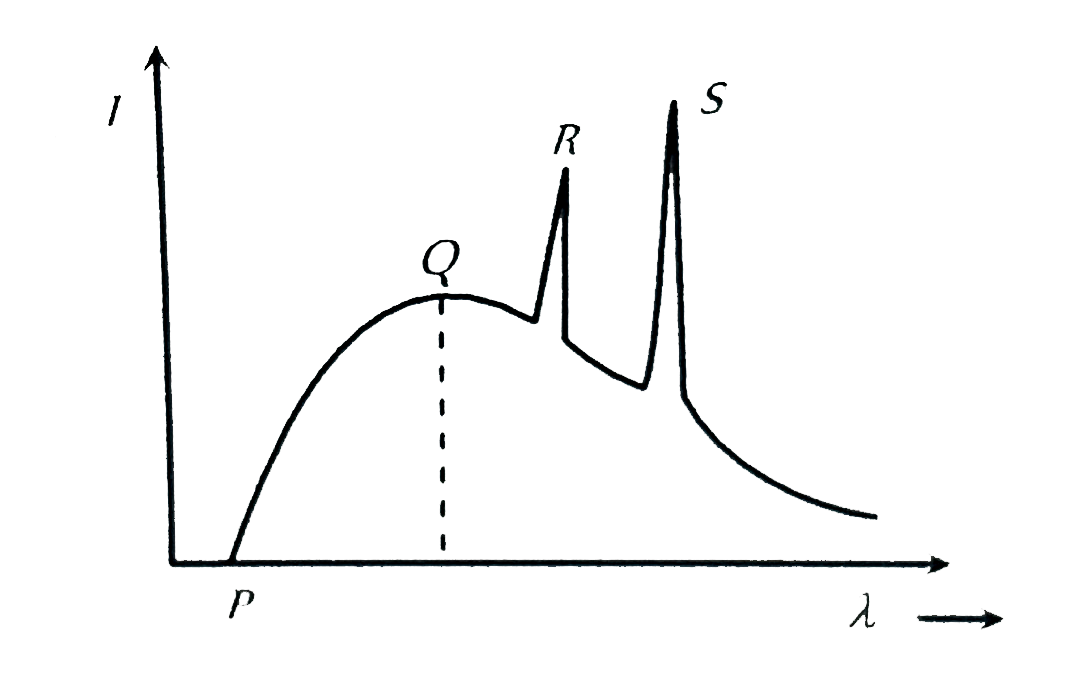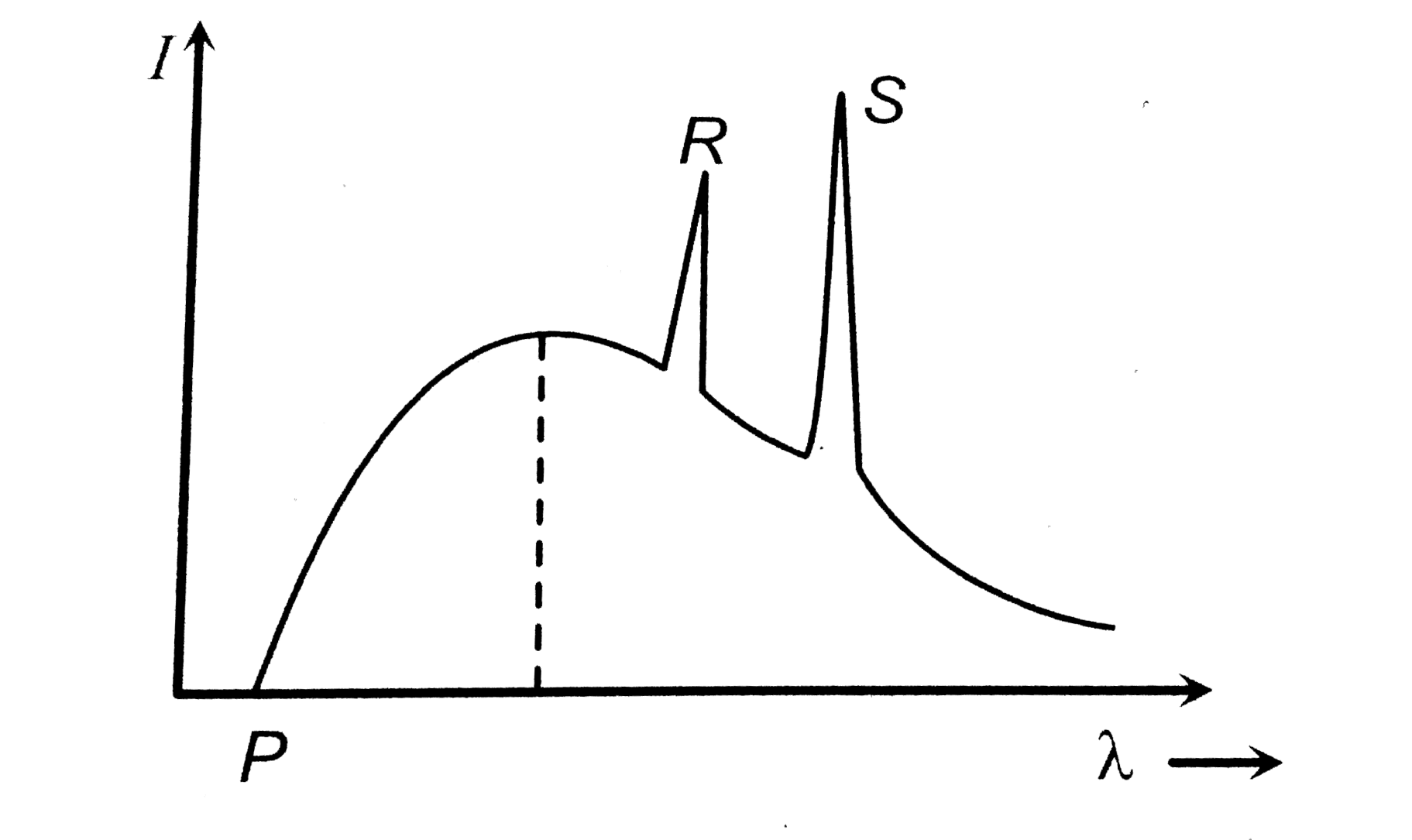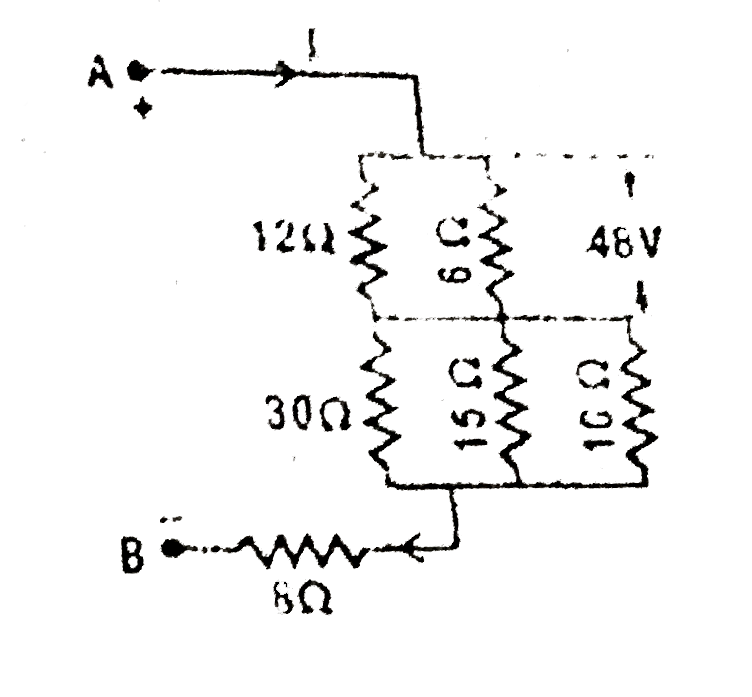A vacuum photocell consists of a central cathode and an anode. The internal surface is silver of work function 4.5 eV. The contact potential difference between the electrodes equals to 0.6 V. The photocell is illuminated by light of wavelength 2.3×10−7m.
a. What retarding potential difference should be applied between electrodes of the photocell for the photocurrent to drop to zero?
b. If a retarding potential of 1V is applied between electrodes at what limiting wavelength λ of light incident on the cathode will on the cathode will the photoelectric effect begin?
a. Contact potential difference, U0=0.6V. The energy acquired by electron on reching the electrode =eU0
According to Einstein's equation,
hv=W+KE−eU0
or KE=hυ−W+eU0=hcλ−W+eU0
v0=hcλe−We+U0
=(6.62×10−34)(3×108)2.3×10−7×1.6×10−19−4.5+0.6
=5.4−4.5+0.6=1.5V
b. V0=hcλe−We+U0
1=hcλe−4.5+0.6
or hcλe−4.5−0.6=4.9
or λ=hc4.9e=(6.62×10−34)(3×108)4.9×(1.6×10−19)
=2540×10−10m=2540A
Topper's Solved these Questions
- PHOTOELECTRIC EFFECTBook:CENGAGE PHYSICSChapter:PHOTOELECTRIC EFFECTExercise:Single Correct
Explore 130 Videos
- PHOTOELECTRIC EFFECTBook:CENGAGE PHYSICSChapter:PHOTOELECTRIC EFFECTExercise:Multiple Correct
Explore 10 Videos
- PHOTOELECTRIC EFFECTBook:CENGAGE PHYSICSChapter:PHOTOELECTRIC EFFECTExercise:Exercise 3.2
Explore 8 Videos
- NUCLEIBook:CENGAGE PHYSICSChapter:NUCLEIExercise:QUESTION BANK
Explore 59 Videos
- RAY OPTICSBook:CENGAGE PHYSICSChapter:RAY OPTICSExercise:DPP 1.6
Explore 12 Videos
Similar Questions
A cathod ray tube has a potential different of V between the cathod and anode . The speed of the cahtod rays is given by
View SolutionA metal surface of work function 1.07eV is irradiated with light of wavelength 332nm. The retarding potential required to stop the escape of photo - electrons is
View Solution
Knowledge Check
If the potential difference between the anode and cathode of the X-ray tube is increases
 AThe peaks at R and S would move to shorter wavelengthBThe peaks at R and S would remain at the same wavelengthCThe cut off wavelength at P would decreaseD(b) and (c) both are correct
AThe peaks at R and S would move to shorter wavelengthBThe peaks at R and S would remain at the same wavelengthCThe cut off wavelength at P would decreaseD(b) and (c) both are correctIf the potential difference between the anode and cathode of the X - ray tube is increases
 AThe peaks at R and S would move to shorter wavelengthBThe peaks at R and S would remain at the same wavelengthCThe cut off wavelength at P would decreaseD(b) and (c) both are correct
AThe peaks at R and S would move to shorter wavelengthBThe peaks at R and S would remain at the same wavelengthCThe cut off wavelength at P would decreaseD(b) and (c) both are correctThe cathode and anode in a photocell are respectively.
Asemi cylindrical metal plate and square plate.Bsemi cylindrical metal plate and straight wire.Cstraight wire and semi-cylindrical metal plate.Da square plate and semi-cylindrical metal plate.
Radiation of energy 6.5 eV is incident on a metal surface whose work function is 4.2 eV. What is the potential difference that should be applied to stop the fastest photoelectrons emitted by the metal surface ?
View SolutionThe work function of a metallic surface is 5.01 eV. The photoelectrons are emitted when light of wavelength 2000A falls on it. The potential difference applied to stop the fastest photoelectrons is
View SolutionIn the figure the potential difference across 6 ohm resistor is 48 V. Then the potential difference between A and B is

View SolutionWhat is the stopping potential when the metal with work function 0.6eV is illuminated with the light of 2eV ?
View SolutionThe anode vollage of a photocell is kept fixed . The wavelength λof the light falling on the cathode varies as follows
View Solution

